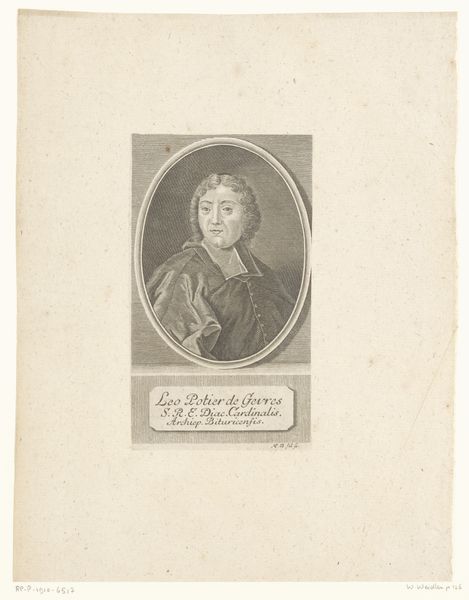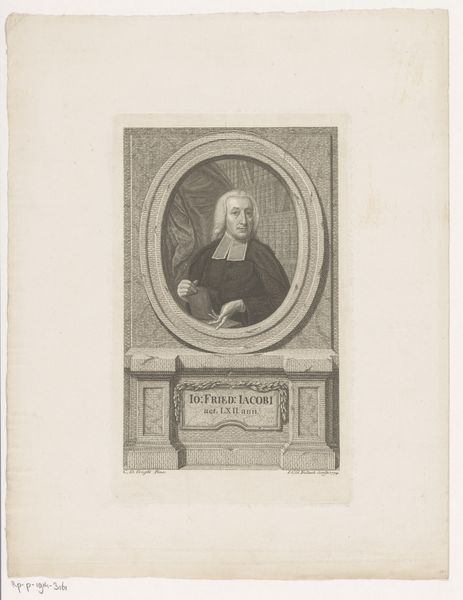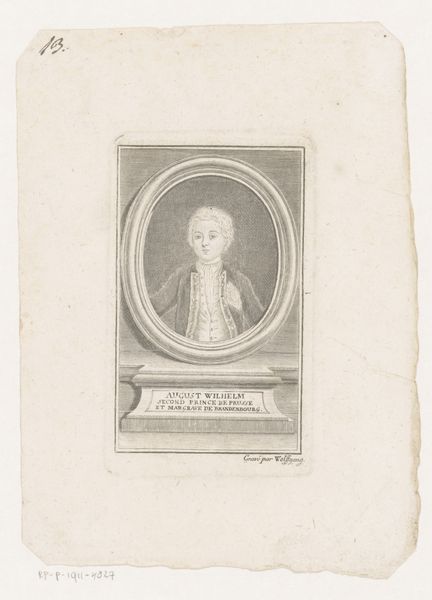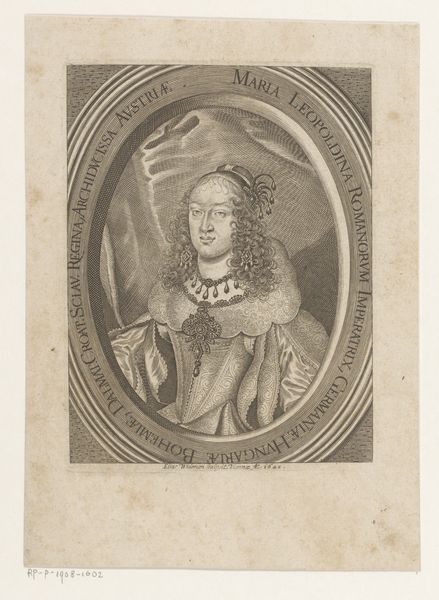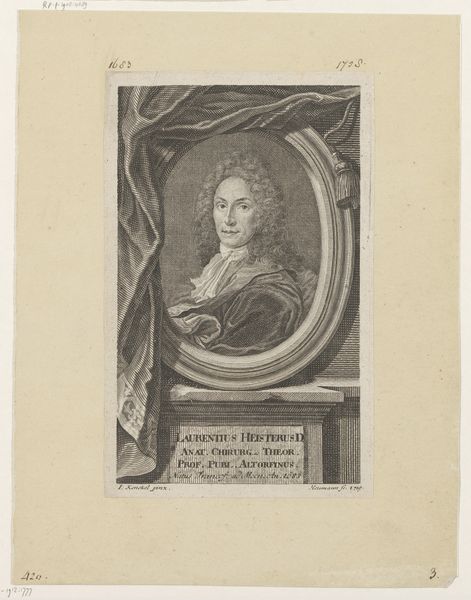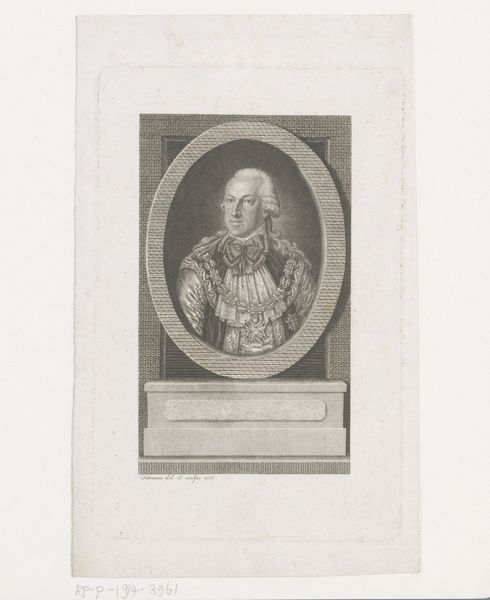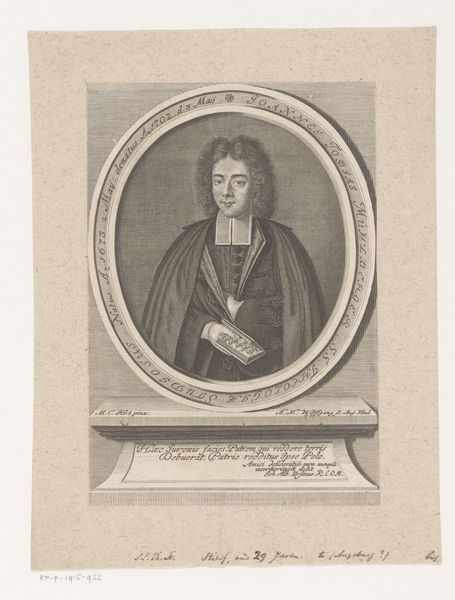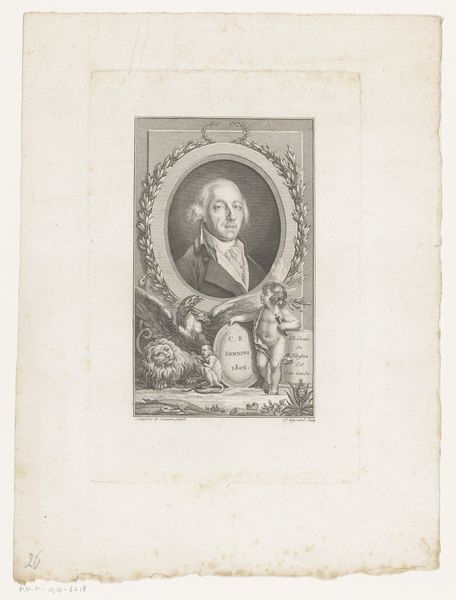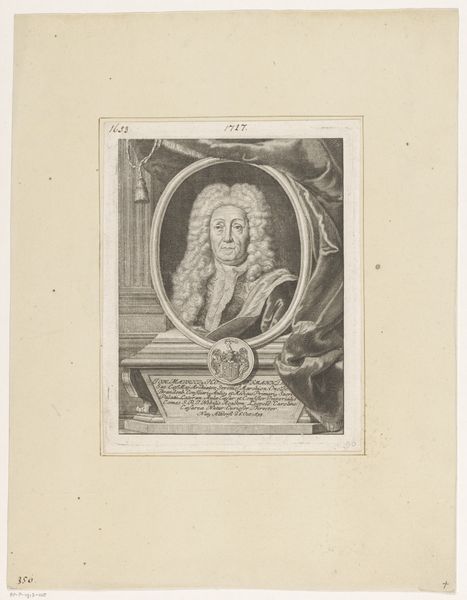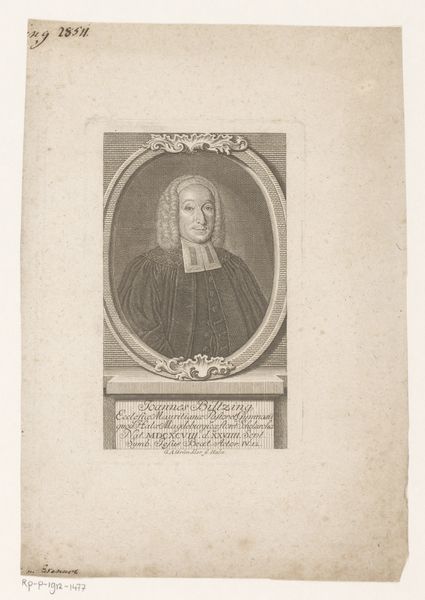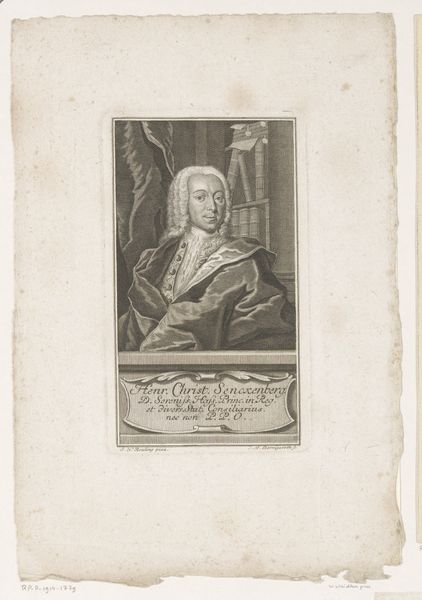
Dimensions: height 200 mm, width 120 mm
Copyright: Rijks Museum: Open Domain
Carl Christian Glassbach created this portrait of Johann Friedrich Nolte using etching, a printmaking technique that dates back to the 16th century. Glassbach, born in 1751, lived during a time of significant social and political upheaval, including the Enlightenment and the rise of revolutionary movements. In the image, Nolte is depicted within a carefully rendered oval frame, supported by an inscribed pedestal. The identity of the sitter is important. Nolte is described as 'Subaevis Scholae Schneepfentanae Rector'. This portrait then isn't merely a depiction, but a document of professional status within a highly structured society. Glassbach’s choice of etching, a medium allowing for detailed lines and tonal variations, reflects the period’s emphasis on precision. However, this precision also highlights the rigid social hierarchies that defined Nolte's world, a world on the cusp of radical change. The portrait prompts us to consider how individuals navigate their identities within the confines of social expectations. The subtle details, from the subject's clothing to the formal setting, speak volumes about the values and aspirations of the time.
Comments
No comments
Be the first to comment and join the conversation on the ultimate creative platform.

